Having played the 9th atop the dune, we tumble off to the (sea) side for the 10th. Named "Lagoon" -- you will be hard-pressed to find one on the hole today! -- it offers an excellent example of bunkers as a driving hazard.
10 tee: if you drive up the "ramp" to the left, your view to the green is obscured; however, a drive right opens the view -- but you must challenge the two bunkers successfully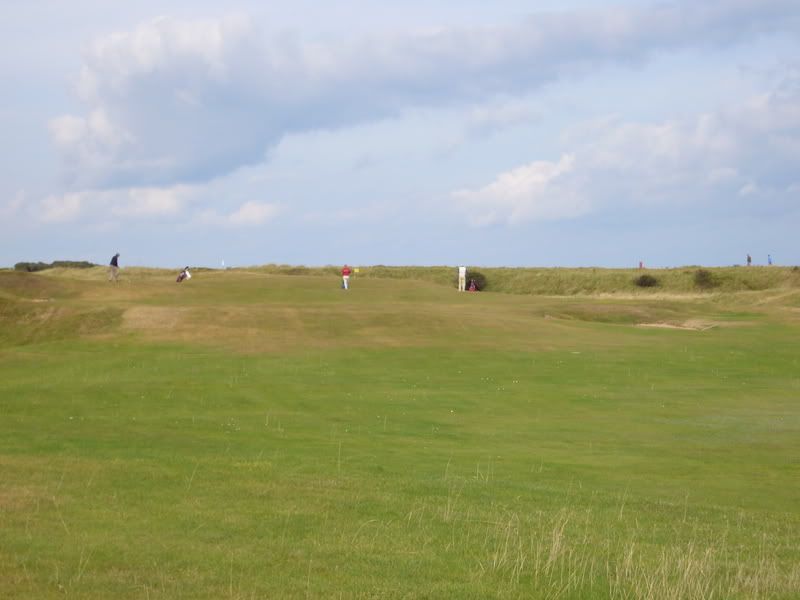
A drive left leaves you a little $%@#$ flip wedge (50-60 yards), over the dune: it's blind, to boot. (Astute readers will note the use of the "$%@#$" modifier and conclude rightly the author's feeble grasp of this shot.)
But a successful drive to the right does not see the golfer through to the green as he still must negotiate two nasties...perhaps he goes "coast to coast" as it were: bunker to bunker.
10 green, as seen from top of dune to left of play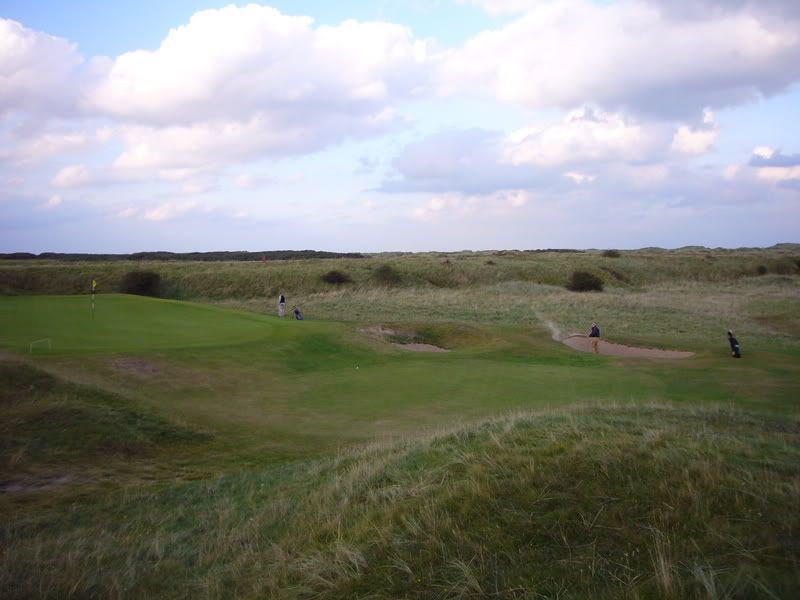
The 11th takes us back over to the landward side of the dune -- note how we tack to and fro across that feature -- and as the picture indicates, this is a real bus station of a spot. The hole is short -- 304 yards from the yellow tees -- and the play is left.
11 tee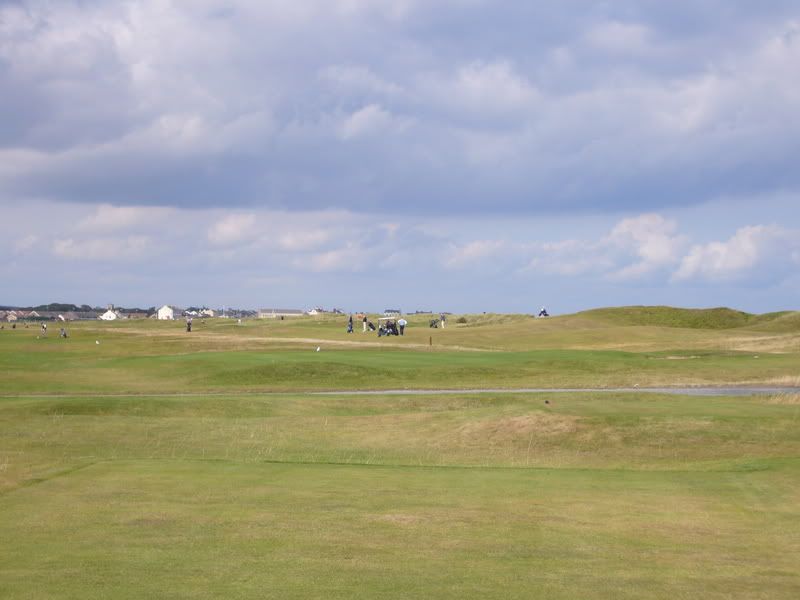
One member of the group saw fit in fact to play far far left, prompting one of his competitors
Craig who shall remain nameless to sputter against the lack of punishment for going left, his argument convincingly blunted by the echelon of bunkers directly on the line of approach, short and left of the green.
11 green
And even passing through a bus station, on a links peace can beckon minutes later. Course greets sun and sky to wrap the golfer contently in its unique
terroir.
11 green, as shot from the right with 6 fairway and the Snooks beyond
The par 3 12th eases us off the dune, but gently enough that our view of the green is partially obscured.
12 tee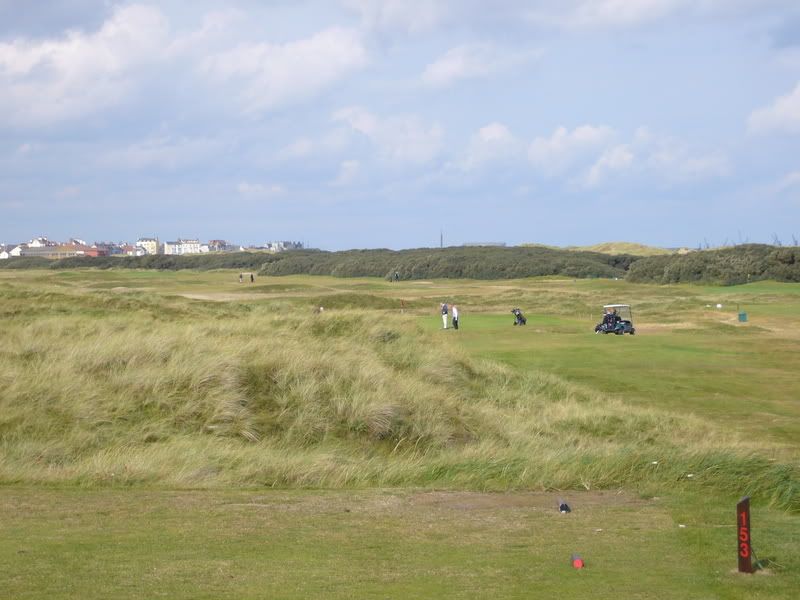
After a semi-blind tee shot, the hole's plainly apparent green gives plenty of time for thought (and conversation).
12 green: In the solar lee of the dune, shadows lengthening, golfers reflect on their shots, and contemplate the work left to do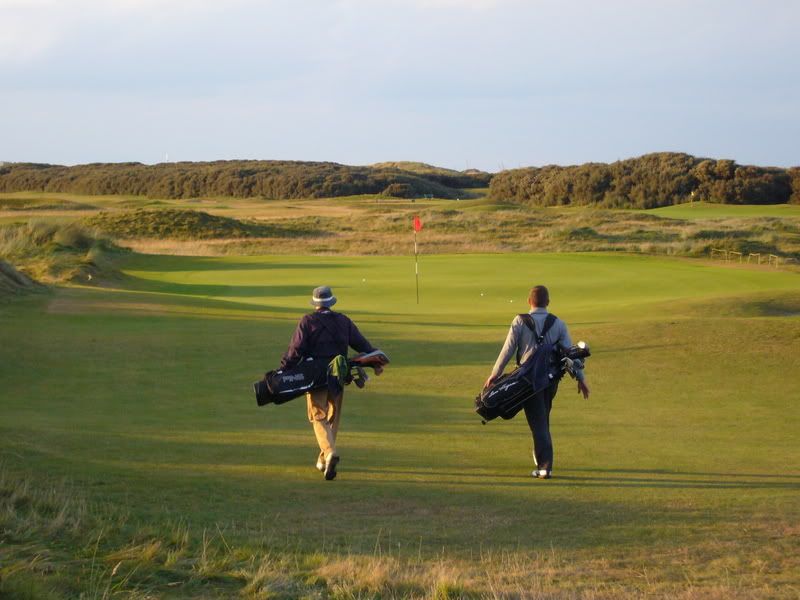
13 is notable for a left-center fairway bunker right where the golfer wants to hit (230 off the yellow tees, 245 off the whites), but let's move to the 14th, "Sahara," and its ur-feature: its "boomerang" green.
Why do so many modern courses palliate the "dub zone" -- short and right of the green -- with gentle ground? The golfer who flares his shot on 14 will see it disappear suddenly as balls entering bunkers tend to do. Furthermore, he will know of his fate from similarly-poor shots hit to other greens, both at Seaton Carew and other well-designed courses of that age.
14 approach: three bunkers short and right will catch any shot struck with anything less than confidence, difficult given the ball-eating buckthorn running the length of the right side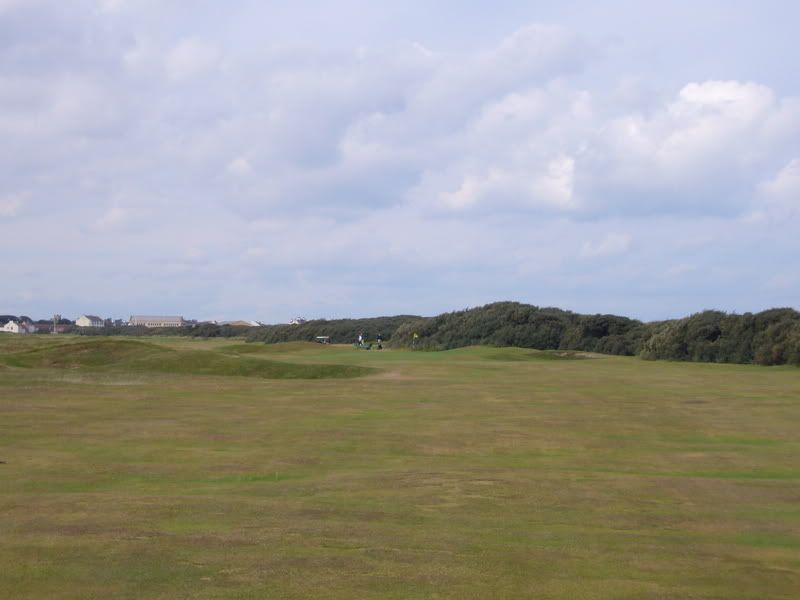 The "boomerang" 14th green: connect the dots from here to Crystal Downs?
The "boomerang" 14th green: connect the dots from here to Crystal Downs?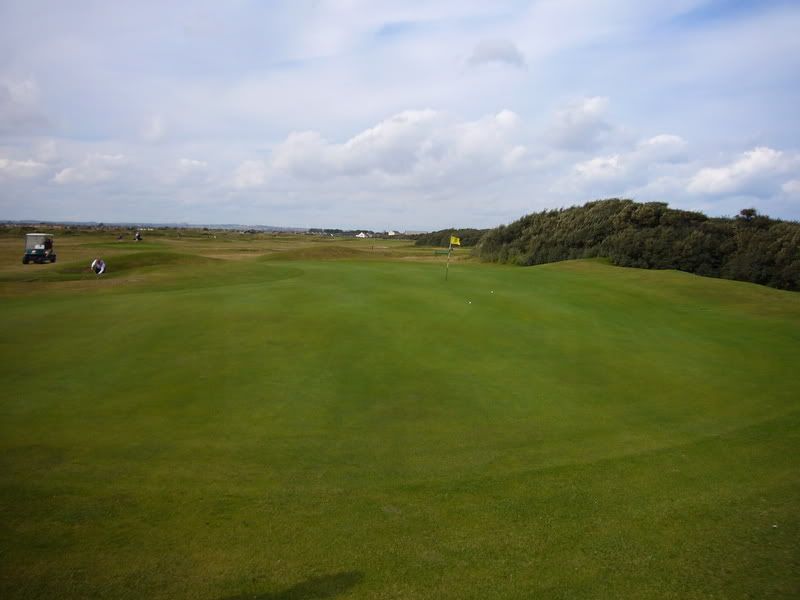
The par 3 15th (the third and final 3) is long, playing into the prevailing wind, and takes us back to the dune.
15 tee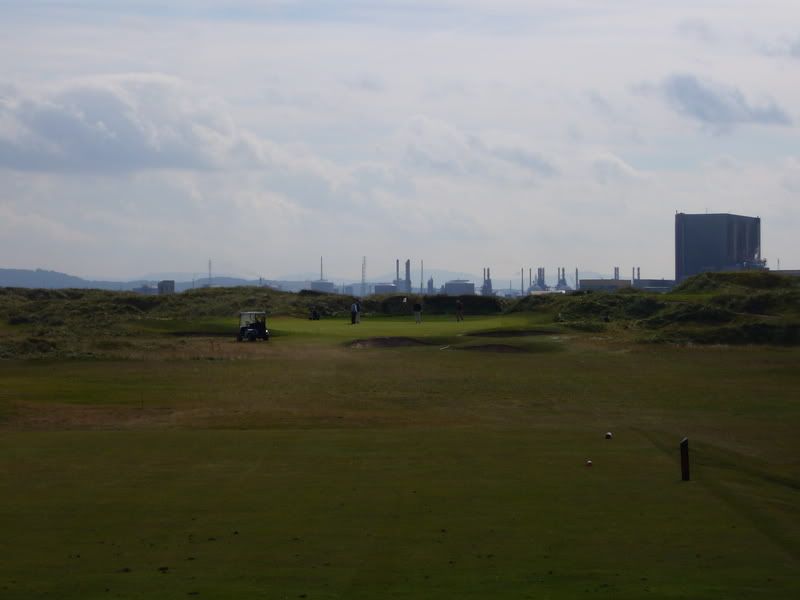
16 is an excellent driving hole: a dogleg left, the golfer must choose how much to cut off, challenging not only bunkers and rough to the inside but, if he plays conservatively, a bunker on the outside roughly 200 yards from the yellow tees -- not to mention the wall of buckthorn.
A difficult prospect given the prevailing wind off port abaft.
16 tee 16 green: nice false front and tie in of green to R bunkers and beyond
16 green: nice false front and tie in of green to R bunkers and beyond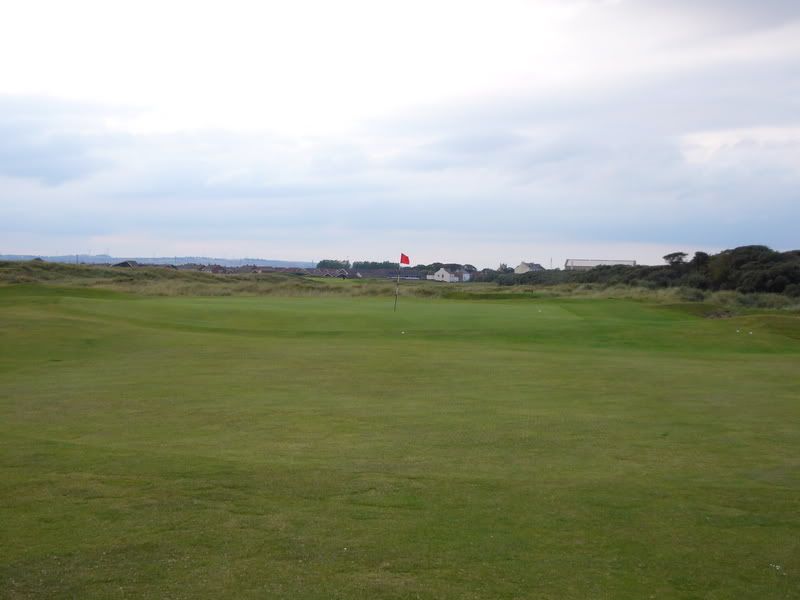
Seaton Carew eminds me of Rye in its economical use of a single, albeit large, feature: a long-running dune. Virtually every hole employs this dune to some degree, although sadly there is no equivalent to Rye 4 or the Sea Hole. There is, however, 17, named "Snag."
In Donald Steel's words, "A study of it alone justifies a trip to Seaton Carew."
From the tee, the golfer is presented with a fan-shaped green that in Siren fashion faces the tee directly, calling the golfer to hit away. But notice the fairway angled from short left to long right...
17 tee: is the question how far right to hit...or how far left? Aye!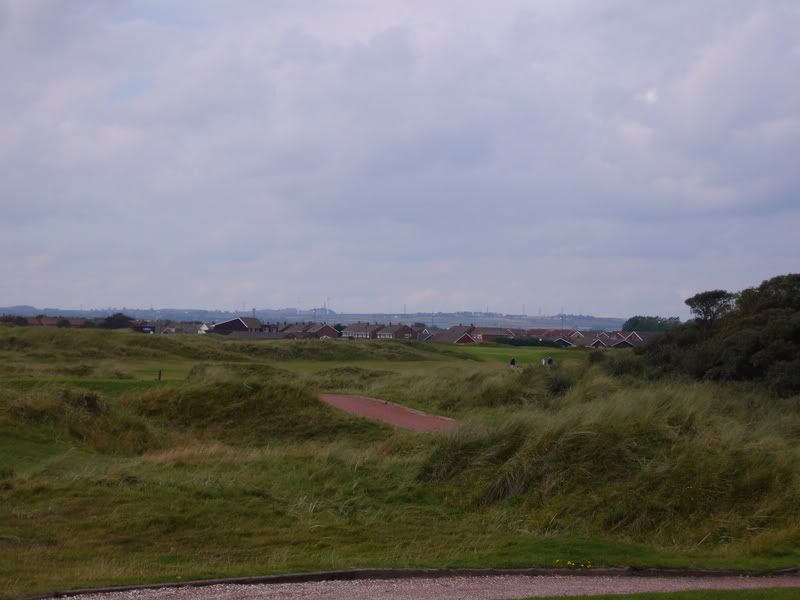
The accepted best tee shot is as far to the right as the golfer feels adept; however, I should think a right hole location, as we faced, might actually tip the optimum to the left, as the green opens a little from that side. The challenge from over there: a partially-blind shot.
Like all great holes, this one gets the golfer thinking, and we know what that does...
17 approach: the advantage of the left is a function of the fan shape of the green plus a hole cut on the right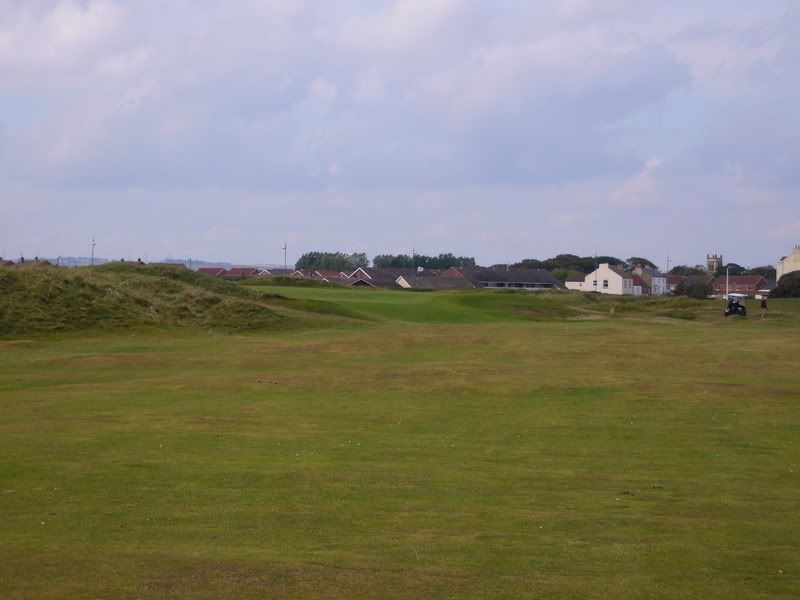
...for example, seeking to avoid that terrible right-side bunker at all costs, we succeed in Pyrrhic fashion.
17 green from the left: death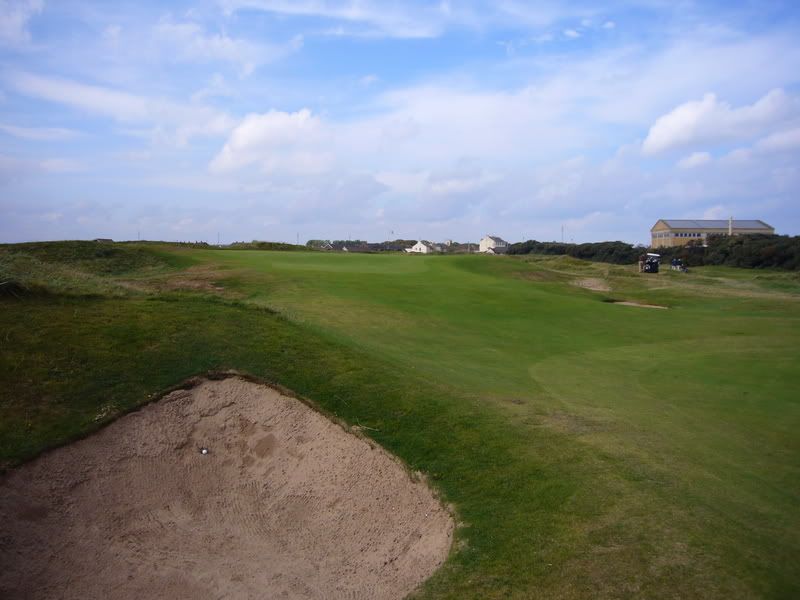 17 green: death on the right
17 green: death on the right 17 green: lovely false front that crowns the rise up the dune
17 green: lovely false front that crowns the rise up the dune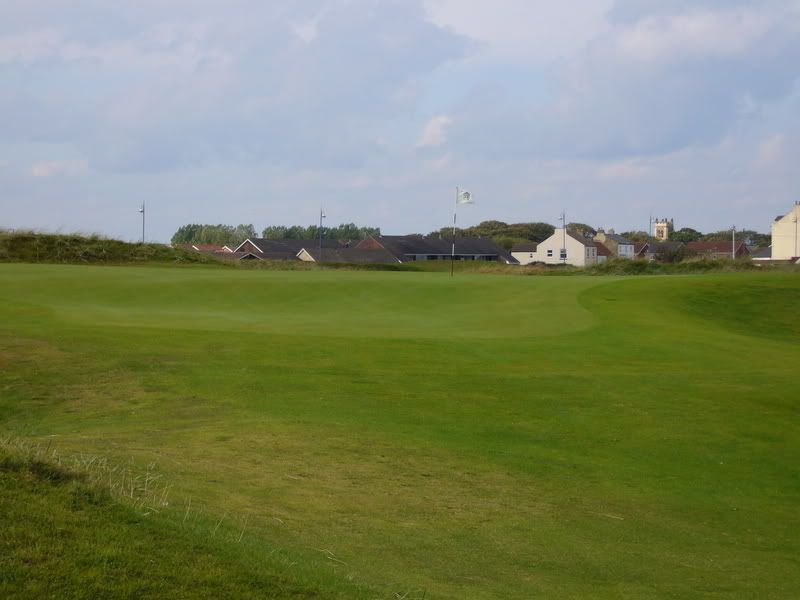
The 18th offers the prospect of driving the green -- but also of driving into a car! Thread the needle: avoid the buckthorn right and the car park behind it.
18 tee Home green: just a few last bumps to negotiate...
Home green: just a few last bumps to negotiate...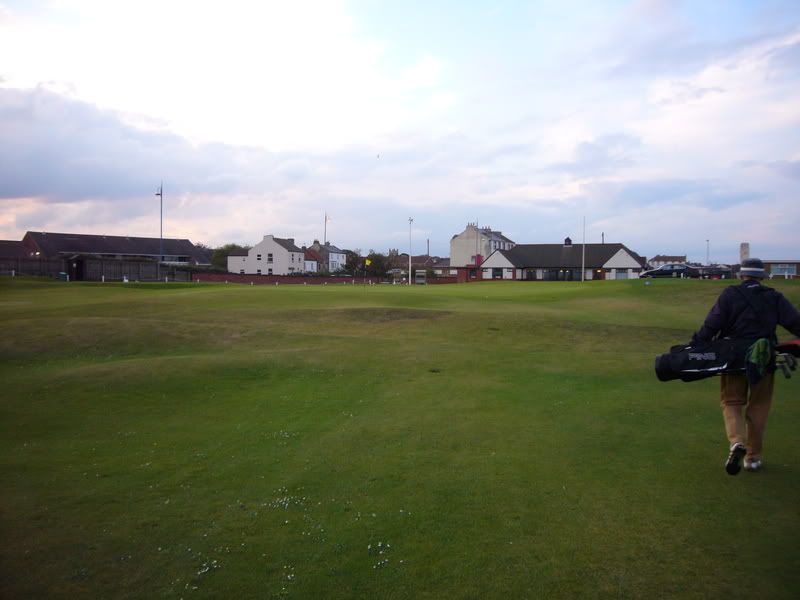
Mark